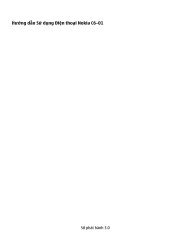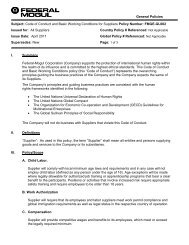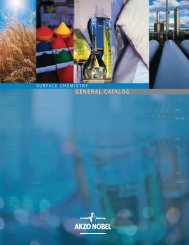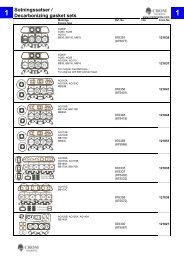You also want an ePaper? Increase the reach of your titles
YUMPU automatically turns print PDFs into web optimized ePapers that Google loves.
A<br />
ENGINEERING<br />
SHAFT AND HOUSING CONSIDERATIONS<br />
TAPERED ROLLER BEARINGS<br />
In general, machining bearing seats and shoulders in spindles and<br />
housings requires careful consideration of the following <strong>for</strong>m and<br />
orientation characteristics. The first four characteristics apply to<br />
the seats of bearing rings.<br />
• Circularity (roundness) of each seat at every cross section.<br />
• Cylindricity of each seat. Cylindricity includes the taper,<br />
roundness and other <strong>for</strong>m characteristics of the seat.<br />
• Coaxiality of the inner ring seats on the spindle and coaxiality<br />
of the outer ring seats in the housing. Coaxiality includes<br />
offset misalignment and angular misalignment between seats.<br />
• Angularity of each bearing ring seat. This is a consideration<br />
when an inner ring seat is tapered.<br />
The following two characteristics apply to the shoulders<br />
corresponding to each bearing seat.<br />
• Perpendicularity (squareness) of each shoulder to its<br />
corresponding bearing seat, or as a more practical measure,<br />
perpendicularity of each shoulder to the spindle or housing<br />
centerline established from the two bearing seats.<br />
• Flatness of each shoulder. A practical way of assessing the<br />
combined perpendicularity and flatness of each shoulder is to<br />
measure the total runout of the shoulder relative to the spindle<br />
or housing centerline. The runout of the face of the adjusting<br />
nuts, if used, should also be measured.<br />
The tolerances to which these characteristics should be held are<br />
dependent upon the class, size and application of the bearing.<br />
In general, these tolerances should be no greater than the total<br />
indicator reading (T.I.R.) of the assembled bearing.<br />
Some of the characteristics can be difficult to measure precisely.<br />
The individual user may elect to measure a subset of these<br />
characteristics (roundness and taper as an alternative to<br />
cylindricity). The individual user must determine the degree of ef<strong>for</strong>t<br />
and expense to be invested in the measurements. That determination<br />
should be based on the intended application of the bearing and<br />
the level of confidence in the machining process employed to<br />
manufacture the spindle and housing.<br />
Surface Finishes – <strong>Precision</strong> <strong>Bearings</strong><br />
<strong>Precision</strong> class bearings should be mounted on shafts and in<br />
housings that are finished to at least the same precision limits as<br />
the bearing bore or outside diameter.<br />
Furthermore, high-quality surface finishes together with close<br />
machining tolerances of bearing seats also must be provided. The<br />
following tabulations give some guidelines <strong>for</strong> all these criteria.<br />
Bearing class<br />
All sizes C B A AA<br />
3 0 00 000<br />
μm<br />
μin<br />
μm<br />
μin<br />
μm<br />
μin<br />
μm<br />
μin<br />
Shaft - Ra 0.8 0.6 0.4 0.2<br />
32 24 16 8<br />
Housing - Ra 1.6 0.8 0.6 0.4<br />
63 32 24 16<br />
Table 19. Suggested tapered roller bearing shaft and housing finishes.<br />
88 TIMKEN MACHINE TOOL CATALOG







